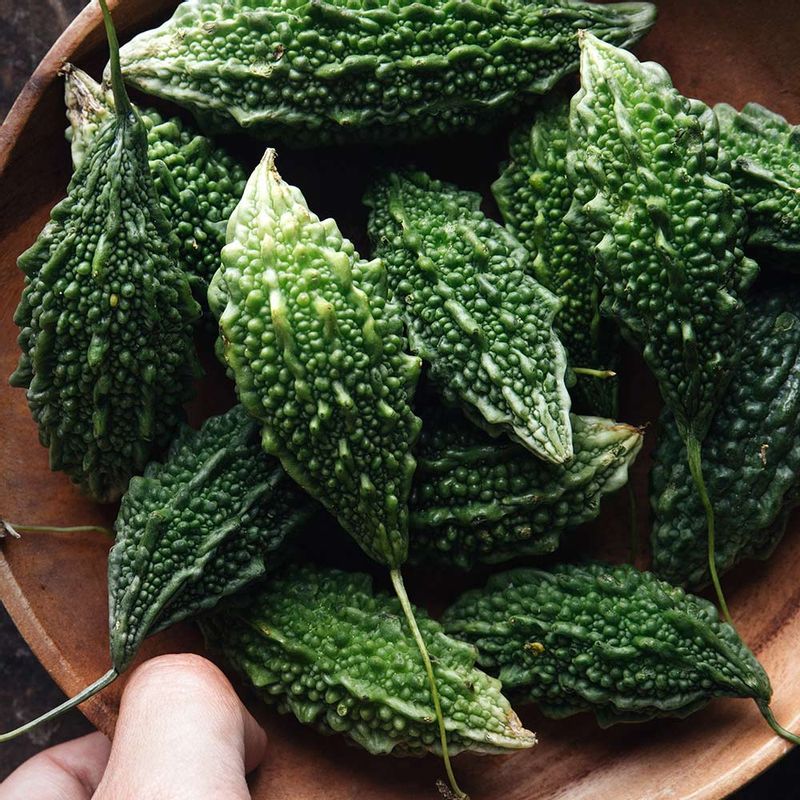Of the few vegetables that are native to India, bitter gourd or karela is one of them. In the 13th century, karela was shipped to China. Ever since the bitter green has been a part of the country’s food scene. Over time, its popularity grew and, today, it is used across Southeast Asia, Africa, and the Caribbean too.
As its name suggests, the vegetable has a distinct bitter taste—a characteristic that lends it several medicinal properties. There are two varieties of bitter gourd available in the market. One is a pale green, whereas the other is shorter and dark green in colour. Both the varieties, when unripe, have white-coloured seeds in them. When they are ripe, the seeds turn red.
Superpowers
Bitter gourd may not be a crowd-favourite, thanks to its bitter taste, but the vegetable is an Indian superfood and this fact can’t be ignored. According to Shirin Kapadia, a Mumbai-based independent nutritionist, it is one of the must-eat local vegetables, especially during the monsoons.
“Karela is a good source of iron, manganese, potassium, zinc, folate. Besides these, it is also a rich source of vitamin C, which helps build our immune system, and increases the body’s resistance against various infections.” Karela contains 88mg of iron per 100 grams. The recommended dietary allowance for iron is 17mg/day for males and 21mg/day for females. So by consuming just 20-25 grams of karela you can get your daily requirement of iron fulfilled. She adds, “Bitter gourd is an excellent source of dietary fibre—the regular consumption of the same is known to improve digestion by ensuring you have a healthy gut, which in turn aids digestion and better absorption of nutrients.”

Adding to the medicinal benefits of bitter gourd, Amreen Sheikh, Dietician at Wockhardt Hospital, Mumbai Central shares that bitter gourd contains a high amount of beta-carotene. This property makes it one of the best veggies to alleviate issues related to eyesight and also aids in improving eyesight in the long run. Bitter greens such as bitter gourd possess phytonutrients that assist the liver in managing cholesterol, detoxifying blood, and balancing hormones, mentions author Don Orwell in his book Superfoods Today: Chocolate Sugar Detox.
According to Sheikh, bitter gourd is also a must-eat for weight-watchers, as the vegetable is low in calories, fats, and carbohydrates. Not many know, but bitter gourd contains 80-85 per cent water content. This means it will keep you full, stave off cravings for junk food, and keep you well hydrated.
Of all the properties that make bitter gourd a superfood—the most important one—it’s anti-diabetic. According to The World Vegetable Center’s report, more than 285 million people across the globe live with diabetes, the largest lot being in India. “By 2030, it is expected that more than 370 million people worldwide will suffer from Type 2 diabetes,” reads the report. India being a developing country, bitter gourd serves as one of the affordable natural remedies to control diabetes. This bitter green contains an insulin-like compound that actively helps in lowering blood sugar levels. It is said that raw bitter gourd juice significantly improves our body’s glucose tolerance without increasing the insulin in our blood.
Where to buy?
In India, bitter gourd is readily available at local vegetable shops and supermarkets. It can also be bought online.
How to eat?
You can blend bitter gourd in a mixer and drink its juice every morning or just include it in your daily meals as a side dish. Whichever way you choose to consume it make sure you add a dash of lemon juice for vitamin c, which will help in the absorption of iron. From stuffed to fried, there are many ways in which you can prepare bitter gourd for lunch/dinner.




